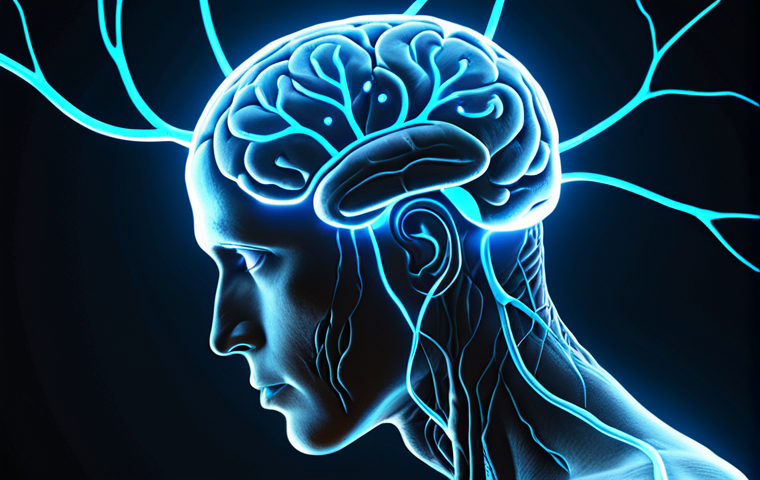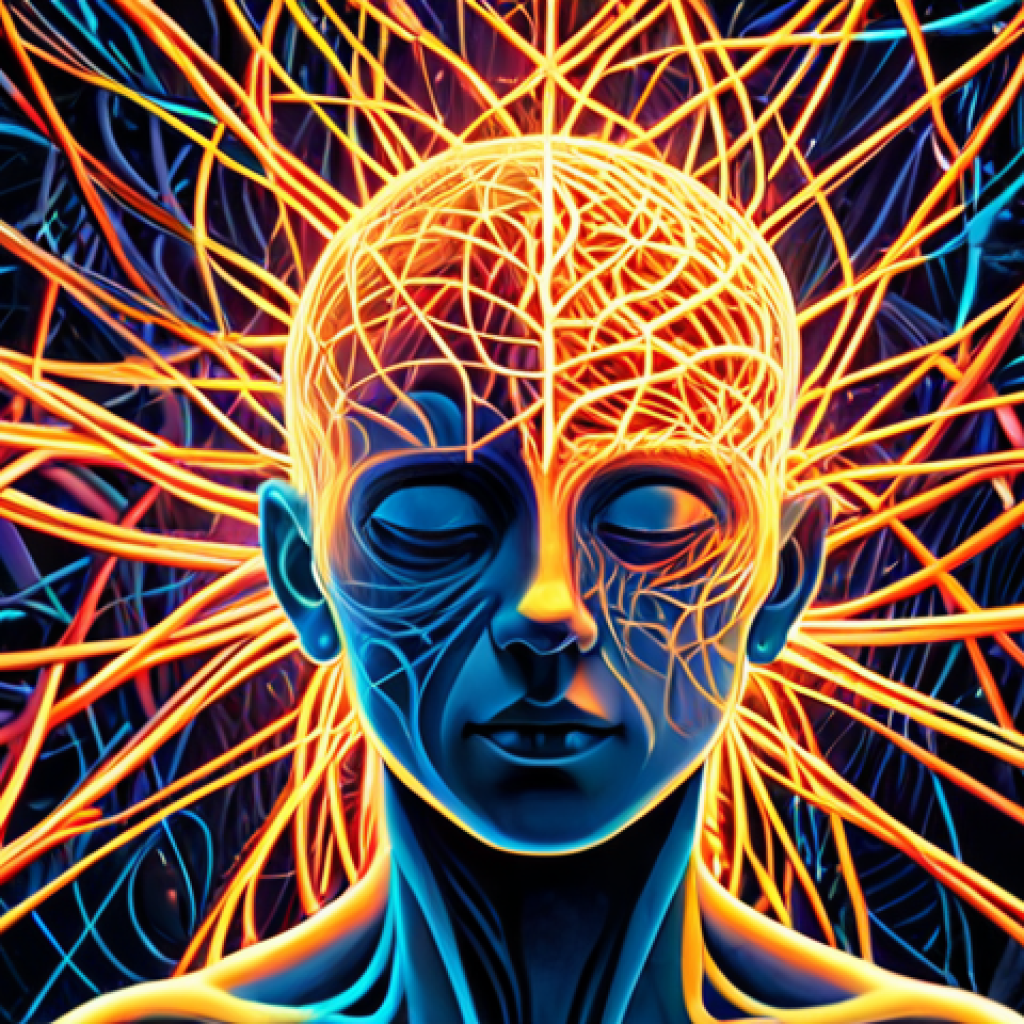Have you ever paused and genuinely wondered, “Why do I feel this way?” or “What drives us to act the way we do?” It’s a question that has captivated thinkers for centuries, and psychology, this incredibly vast and dynamic field, offers a myriad of lenses to try and unravel those very mysteries.
I’ve personally found it absolutely fascinating how different psychological approaches can look at the exact same human experience and come to wildly diverse, yet profoundly insightful, conclusions.
From the deep dives into our unconscious mind that psychoanalysis offers, to the tangible, observable patterns of behavior that behavioral psychology spotlights, or even the intricate ways our thoughts shape our reality as explored by cognitive psychology – each one provides a uniquely powerful perspective.
What’s truly exciting right now is seeing how these traditional approaches are evolving. With the surging focus on mental well-being across the globe, we’re seeing cognitive behavioral therapy (CBT) adapt seamlessly into accessible digital platforms, reaching more people than ever before.
Meanwhile, neuroscience is rapidly validating — or sometimes challenging — concepts that were once purely theoretical, offering us biological underpinnings for things like emotional regulation or even resilience.
And looking ahead, the integration of AI isn’t just a distant dream; it’s already starting to assist in personalized treatment plans, predicting responses, and even fine-tuning therapeutic interventions based on individual data, pushing the boundaries of what we thought was possible in mental healthcare just a few years ago.
This complex, ever-evolving interplay of old wisdom and new tech truly shapes our understanding of the human condition. Let’s dive deeper into it below.
The Subtle Power of Our Everyday Thoughts

Our minds are incredibly powerful, isn’t that true? I’ve personally experienced how a simple shift in perspective can completely alter how I feel about a challenging situation.
It’s not just about “thinking positively,” though that’s certainly part of it; it’s about understanding the intricate dance of our internal dialogue. Cognitive psychology really shines a light on how our thoughts, beliefs, and interpretations of events directly shape our emotions and behaviors.
Think about it: two people can experience the exact same setback, but one might feel defeated while the other sees an opportunity for growth. That divergence often comes down to their cognitive framework.
It’s a field that has profoundly impacted my own journey, teaching me to gently question my immediate reactions and delve deeper into the underlying thought patterns.
1. Unpacking Our Cognitive Distortions
We all have them, these sneaky, often irrational thought patterns that can trip us up. Things like catastrophizing, where we blow a small issue completely out of proportion, or overgeneralization, where one negative experience colors our entire world view.
I remember a time I failed a particular presentation at work, and my immediate thought was, “I’m terrible at public speaking, I’ll never be good at it.” This was classic overgeneralization!
Recognizing these distortions, and giving them a name, is the first incredibly empowering step. It’s like putting on special glasses that let you see the hidden mechanics of your own mind.
When you label them, they lose some of their power, and you can start to challenge their validity. It’s a bit like a detective game, but you’re the detective and your own thoughts are the clues.
This awareness alone can dramatically reduce anxiety and improve decision-making.
2. The Art of Positive Reframing
Once you’ve spotted those unhelpful thought patterns, the next step is reframing. This isn’t about ignoring problems; it’s about consciously choosing a different, more constructive lens through which to view them.
For instance, instead of “I failed,” try “I learned a lot from that experience, and now I know what to do differently next time.” I’ve found it immensely helpful to practice gratitude, even for small things, as a way to consciously shift my focus.
Or, when faced with a seemingly insurmountable task, I’ll break it down into tiny, manageable steps, reframing the “mountain” into a series of achievable hills.
This mental agility, the ability to pivot your perspective, is a cornerstone of resilience and an absolute game-changer for daily well-being. It helps you find the silver lining, not in a naive way, but in a pragmatic, forward-moving one.
Navigating the Emotional Landscape Within Us
Emotions are such a wild and wonderful part of being human, aren’t they? They can be overwhelming, exhilarating, confusing, or deeply comforting. For the longest time, I used to think of emotions as something that just ‘happened’ to me, outside my control.
But delving into the world of emotional intelligence and regulation has been truly eye-opening. It’s less about suppressing feelings and more about understanding their origins, their messages, and how to navigate them effectively.
It’s about recognizing that feeling frustrated is okay, but perhaps snapping at someone isn’t the most productive response. This field doesn’t just scratch the surface; it really gets into the nitty-gritty of why we feel what we feel and how we can respond in ways that serve us better, both personally and in our relationships.
It’s a continuous learning curve, but one that yields profound personal growth.
1. Emotional Intelligence: More Than Just Feelings
Emotional intelligence (EQ) isn’t just a buzzword; it’s a vital skill set for thriving in today’s complex world. It encompasses self-awareness – knowing what you’re feeling and why – self-regulation – managing those feelings appropriately – and empathy – understanding and sharing the feelings of others.
I once had a client who struggled deeply with public speaking, not because of a lack of skill, but because of intense anxiety. By helping them identify the core emotion (fear of judgment), understand its triggers (past negative experiences), and then practice self-regulation techniques (deep breathing, positive self-talk), they were able to present with much greater confidence.
It’s about recognizing the subtle cues, both within yourself and in others, and then responding thoughtfully rather than reactively. This level of attunement can transform how you interact with the world around you.
2. Building Resilience in a Shifting World
Life throws curveballs, that’s just a fact. What truly defines us isn’t whether we encounter adversity, but how we bounce back from it. Resilience isn’t about being impervious to pain; it’s about adapting and growing in the face of stress and trauma.
I’ve found that actively cultivating resilience involves several key components. It includes maintaining a strong support network, engaging in self-care practices, developing problem-solving skills, and maintaining a hopeful, albeit realistic, outlook.
One particular strategy I’ve personally leaned on is something called “post-traumatic growth,” which suggests that profoundly challenging experiences can, paradoxically, lead to significant positive psychological changes.
It’s a testament to the human spirit’s capacity to not just endure, but to actually flourish in the aftermath of difficulty.
Understanding the Deepest Drives: Why We Do What We Do
Have you ever done something and then later thought, “Why on earth did I do that?” I know I certainly have! It’s one of the most intriguing questions psychology tries to answer: what truly motivates our actions, often beneath the surface of our conscious awareness?
From the basic drives for survival and connection to the complex pursuits of self-actualization, human motivation is a rich tapestry. Behavioral psychology, in particular, offers compelling insights into how our environment shapes our actions, often through reinforcement and conditioning.
It’s a field that, once you start to grasp it, makes you see everyday interactions, from advertising to parenting, in a completely new light. I’ve personally applied these principles to break bad habits and establish new, more productive ones, and it’s been incredibly effective.
1. Habit Formation: From Theory to Practice
Breaking or building a habit can feel like an uphill battle, but psychological principles make it much more manageable. The core idea is simple: habits are formed by a “cue-routine-reward” loop.
For example, the cue might be seeing your running shoes, the routine is going for a run, and the reward is feeling energized and accomplished. The trick is to identify those cues and rewards, and then consciously alter the routine.
I once struggled with late-night snacking. My cue was watching TV, the routine was heading to the kitchen, and the reward was a temporary burst of pleasure.
I reframed the routine: instead of going to the kitchen, I’d get up and do a quick stretching exercise. Initially, it felt forced, but over time, the new routine started to feel natural, and the reward shifted to a sense of self-control and better sleep.
It truly works.
2. The Complex Dance of Reinforcement and Motivation
We’re constantly being reinforced, whether we realize it or not. Positive reinforcement, like praise or a reward, increases the likelihood of a behavior.
Negative reinforcement, like removing something unpleasant, also increases a behavior. And then there’s punishment, which aims to decrease a behavior.
Understanding these dynamics is crucial not just for personal change but also for understanding social interactions. Imagine a child who misbehaves to get attention – even negative attention can be a powerful reinforcer.
On the other hand, understanding intrinsic motivation – doing something because you genuinely enjoy it or find it meaningful – is where deep, sustainable change often lies.
It’s a far more powerful engine than external rewards alone, as I’ve found when pursuing passions simply for the joy of it.
The Brain’s Intricate Role in Our Daily Reality
It’s utterly mind-boggling to think that this squishy, three-pound organ inside our skulls is responsible for everything we perceive, feel, and do. Neuroscience has exploded in recent decades, moving psychology from purely theoretical concepts to empirically verifiable biological processes.
It’s where I get really excited about the future of understanding the human condition, because it offers tangible explanations for phenomena we once only speculated about.
My own curiosity was piqued years ago when I started reading about neuroplasticity – the brain’s incredible ability to reorganize itself throughout life.
It’s not just a static organ; it’s dynamic, constantly learning and adapting, which gives us immense hope for personal growth and recovery, even after significant challenges.
1. Neurotransmitters and Mood: A Complex Dance
When I first learned about neurotransmitters, it was like someone finally explained the hidden mechanics behind my moods. Serotonin, dopamine, norepinephrine – these aren’t just scientific terms; they’re the chemical messengers that literally shape how we feel, think, and behave.
For example, understanding how serotonin levels can impact mood stability or how dopamine is linked to reward and motivation has been incredibly insightful.
It’s not about reducing complex human experience to mere chemistry, but rather acknowledging the biological underpinnings. This knowledge can empower us to make lifestyle choices that support healthy brain chemistry, like adequate sleep, balanced nutrition, and regular exercise, which I’ve personally found to be foundational for maintaining my mental well-being.
It’s about respecting the intricate biological system that is our brain.
2. Brain Plasticity: Learning and Adapting Throughout Life
The idea that our brains can change and adapt throughout our lives, literally forming new connections and even generating new neurons, is profoundly optimistic.
This neuroplasticity means that we’re not stuck with the brain we’re born with; we can actively reshape it through our experiences, learning, and conscious effort.
I’ve seen firsthand how people recovering from stroke can re-learn functions by engaging different parts of their brain, or how consistent learning of a new skill can physically alter brain structure.
This concept underpins everything from effective therapy approaches to simply staying mentally sharp as we age. It reminds me that our capacity for growth and change is far greater than we often give ourselves credit for.
Every new skill learned, every new experience, subtly rewires our brain, and that’s an incredibly powerful thought.
Psychology in the Digital Age: New Frontiers and Ethical Puzzles

It’s astounding how rapidly technology is reshaping our world, and psychology is no exception. We’re witnessing a fascinating convergence where AI, big data, and digital platforms are not just supporting but actively transforming mental healthcare and our understanding of human behavior.
I’ve been closely following the developments, and what truly excites me is the potential for personalized, accessible interventions that were unimaginable even a decade ago.
However, like any powerful tool, it also brings a host of ethical considerations that we need to actively address. It’s a delicate balance between innovation and responsibility, ensuring that these new technologies serve humanity’s well-being without compromising privacy or fostering new forms of digital dependency.
1. Personalized Pathways with AI
Imagine a world where mental health support is tailor-made for your unique needs, adjusting in real-time based on your responses and progress. That’s the promise of AI in psychology.
From AI-powered chatbots offering initial mental health support to sophisticated algorithms predicting treatment responses, the personalization potential is immense.
I’ve seen pilot programs where AI helps therapists identify patterns they might miss or suggests relevant therapeutic exercises for specific client profiles.
It’s not about replacing human connection, which remains paramount, but about augmenting it. This can lead to more efficient and effective interventions, especially for those in underserved communities who might otherwise lack access to traditional care.
2. The Rise of Digital Well-being Tools
From mindfulness apps to online therapy platforms, digital tools are making psychological support more accessible than ever before. I’ve personally found immense benefit from meditation apps on days when I struggle to quiet my mind, and I know countless people who’ve accessed therapy for the first time because of the convenience of online platforms.
This democratization of mental health resources is a game-changer. However, it also prompts important questions: How do we ensure the quality and safety of these tools?
What about the potential for digital addiction, or the impact of constant connectivity on our mental states? It’s a complex landscape, but one where psychology plays a crucial role in guiding ethical development and use.
| Psychological Approach | Core Focus | Key Benefit (As I’ve Experienced) |
|---|---|---|
| Cognitive Psychology | How thoughts, beliefs, and reasoning affect behavior. | Empowers you to challenge unhelpful thought patterns and reframe situations. |
| Behavioral Psychology | Observable behaviors and how they are learned/modified by environment. | Provides practical strategies for habit formation and breaking cycles. |
| Neuroscience | The biological basis of mental processes and behavior. | Offers tangible explanations for moods and the brain’s capacity for change. |
| Humanistic/Positive Psychology | Personal growth, self-actualization, and human potential. | Focuses on strengths, resilience, and cultivating a meaningful life. |
The Interconnectedness of Our Mind and Body
It’s something we often intellectualize, but truly embodying the idea that our mind and body are inextricably linked has been a transformative experience for me.
This isn’t just some abstract philosophical concept; it’s a profound physiological reality. How many times have you felt physical symptoms, like a tension headache or an upset stomach, when you’re under immense stress?
Or conversely, how a simple walk in nature can instantly lift your spirits? Health psychology delves deep into this fascinating interplay, exploring how psychological factors influence physical health, and vice versa.
It’s a field that underscores the importance of a holistic approach to well-being, moving beyond treating symptoms to understanding the root causes that often span both our mental and physical states.
It’s about recognizing that wellness isn’t segmented; it’s a beautifully integrated system.
1. Stress: A Bridge Between Mind and Body
Stress isn’t just a feeling; it’s a complex physiological response that affects every system in our body. Chronic stress, in particular, can lead to a cascade of physical problems, from cardiovascular issues to weakened immune function.
I’ve personally experienced how persistent high-stress periods manifested as constant fatigue and digestive issues. Understanding the stress response – the “fight or flight” mechanism – is the first step to managing it effectively.
It’s about recognizing the early warning signs in your body, whether it’s a tight jaw or shallow breathing, and then consciously engaging in techniques to counteract that response.
This could be deep breathing, progressive muscle relaxation, or simply taking a short break to mentally detach. Learning to mitigate stress is not just good for your mind, but absolutely vital for your physical health.
2. The Power of Mindfulness and Somatic Practices
One of the most powerful tools I’ve integrated into my own life is mindfulness. It’s not just about sitting cross-legged and meditating; it’s about bringing a non-judgmental awareness to the present moment, observing your thoughts, feelings, and bodily sensations as they arise.
This practice has a profound impact on the mind-body connection, helping to reduce stress, improve emotional regulation, and even alleviate chronic pain.
Similarly, somatic practices, which focus on the body’s sensations to release tension and trauma, have been incredibly insightful. Things like gentle stretching, mindful movement, or even simply noticing where you hold tension in your body can create a powerful release.
It reminds us that our bodies hold wisdom, and by tuning into them, we can unlock deeper levels of healing and well-being. It’s a continuous journey of self-discovery, moving from the head to the body.
Cultivating Growth: Our Journey Towards a Fulfilling Life
Ultimately, much of psychology, at least in the way I’ve come to understand and appreciate it, is about helping us move towards a more fulfilling and meaningful life.
It’s about harnessing our potential, overcoming obstacles, and building a foundation for enduring well-being. This isn’t a passive process; it’s an active, ongoing endeavor that requires curiosity, self-compassion, and a willingness to step outside our comfort zones.
I’ve found that the real magic happens when we start to integrate these different psychological insights, weaving them into a personal philosophy that guides our choices and helps us navigate life’s inevitable ups and downs.
It’s not about finding a single “answer,” but about developing a robust toolkit for self-discovery and growth.
1. The Path of Self-Actualization
Maslow’s hierarchy of needs, and the concept of self-actualization at its peak, has always resonated deeply with me. It’s the idea of striving to become the best version of ourselves, fulfilling our unique potential.
This isn’t a destination, but a lifelong journey of growth and discovery. For me, it has meant constantly learning, seeking out new challenges, and aligning my actions with my core values.
It’s about asking yourself, “What truly makes me feel alive?” and then pursuing those passions with intention. It can be uncomfortable at times, pushing past limiting beliefs, but the reward of living authentically and purposefully is immeasurable.
It’s a deeply personal and incredibly empowering pursuit.
2. The Importance of Meaning and Purpose
Beyond mere happiness, finding meaning and purpose in life has been shown to be a cornerstone of long-term well-being and resilience. Whether it’s through contributing to a cause you believe in, nurturing strong relationships, or dedicating yourself to a craft, having a sense of purpose provides a powerful compass.
I’ve observed in my own life, and in the lives of those around me, that when we feel we are part of something larger than ourselves, or when our actions contribute to something meaningful, the challenges of life become more manageable, and the joys become more profound.
It’s that deep, quiet satisfaction that comes from knowing your existence matters, and that you are living a life that aligns with your deepest values.
Closing Thoughts
As we wrap up this journey through the fascinating world of psychology, I hope you feel as inspired as I do by the immense potential within us. It’s truly incredible how understanding our minds, emotions, and motivations can empower us to navigate life’s complexities with greater grace and purpose.
This isn’t just academic knowledge; it’s a practical toolkit for living a more authentic, resilient, and deeply satisfying life. Keep exploring, keep questioning, and most importantly, keep applying these insights to your own unique path.
Useful Information
1. Start with Self-Awareness: Before you can change anything, you need to know what’s happening. Pay attention to your thoughts, feelings, and physical sensations throughout the day.
2. Question Your Assumptions: Many of our beliefs are learned and can be inaccurate. Challenge negative thought patterns and ask yourself if there’s another way to view a situation.
3. Prioritize Sleep: It’s a foundational pillar of mental and emotional health. Consistent, quality sleep profoundly impacts your mood, cognitive function, and ability to cope with stress.
4. Connect with Others: Humans are social creatures. Nurturing strong relationships, whether with family, friends, or a community, is vital for well-being and resilience.
5. Embrace Small Habits: Big changes often start with tiny, consistent actions. Focus on making one small, positive habit change at a time rather than overwhelming yourself.
Key Takeaways
Understanding psychology offers profound insights into our thoughts, emotions, and behaviors, enabling us to foster personal growth and well-being. By recognizing cognitive distortions, practicing emotional intelligence, and leveraging concepts like neuroplasticity, we can actively shape our daily reality.
The interconnectedness of mind and body, highlighted by stress responses and mindfulness, underscores the need for a holistic approach to health. Ultimately, integrating these psychological principles empowers us to cultivate meaning, purpose, and a fulfilling life.
Frequently Asked Questions (FAQ) 📖
Q: You mentioned that different psychological approaches can look at the same human experience and come to “wildly diverse, yet profoundly insightful, conclusions.” Can you give a real-world example of how these varying perspectives – like psychoanalysis, behavioral, and cognitive psychology – might interpret one common human challenge?
A: Oh, absolutely! I find this aspect of psychology endlessly fascinating because it really highlights the depth of the human experience. Let’s take something almost everyone can relate to: procrastination.
If you brought your chronic procrastination to a psychoanalyst, they might dig deep into your childhood, perhaps exploring unconscious fears of success or failure, or unresolved conflicts with authority figures that manifest as resistance.
It’s a deep dive into the hidden currents of your past. A behavioral psychologist, on the other hand, would focus on observable patterns. They might ask, “What happens right before you procrastinate?
What’s the reward (even if it’s just momentary relief) you get from not doing the task?” They’d look at triggers and consequences, maybe suggesting strategies like breaking tasks into tiny, manageable steps or setting up external rewards to recondition your responses.
Then, a cognitive psychologist would zero in on your thoughts. They’d probably ask, “What stories are you telling yourself about this task? Are you thinking, ‘I’m not good enough,’ or ‘This is too hard,’ or ‘I’ll fail’?” They’d help you identify and challenge those negative thought patterns, perhaps reframing your perception of the task or your own capabilities.
See? Same problem, wildly different yet equally valid pathways to understanding and potential change. It’s like looking at the same mountain from three different sides; you get a complete picture.
Q: The text hints at exciting evolutions, specifically mentioning CBT adapting to digital platforms and neuroscience validating psychological concepts. How are these advancements tangibly impacting mental well-being for the average person right now?
A: This is where it gets really exciting, because it’s not just theory anymore; it’s tangible impact! For the average person, the rise of CBT on digital platforms has been a game-changer for accessibility.
I mean, remember when therapy felt like this huge, intimidating commitment – finding a therapist, scheduling appointments, dealing with insurance, the cost?
Now, you can find incredibly well-designed apps and online programs based on CBT principles that you can access from your couch, in your pajamas, at midnight if that’s when you finally have a moment.
It’s lowered the barrier to entry significantly, making evidence-based support available to so many more people who might never have sought traditional therapy.
As for neuroscience, it’s almost like psychology is finally getting its “receipts”! Concepts we’ve intuitively understood for decades, like the power of mindfulness for stress reduction, are now being backed by MRI scans showing actual changes in brain structures.
This validation helps destigmatize mental health challenges because it shows they’re not just “in your head”; there are biological underpinnings. For me, knowing that my meditation practice is literally reshaping my brain in beneficial ways makes it feel even more powerful and real.
It gives incredible credibility to these practices.
Q: With the rapid integration of
A: I and new tech in mental healthcare, as the text describes, is there a risk that the essential human connection or the “old wisdom” of psychology might get lost or diminished?
A3: That’s a really thoughtful question, and it’s one I hear quite a bit, honestly. My gut feeling, and what I’m seeing play out, is a resounding no, at least not in a diminishing way.
In fact, I think AI and new tech are actually enhancing the human element, rather than replacing it. Think about it: AI can crunch massive datasets, identify patterns, personalize treatment plans based on an individual’s responses, and even flag potential risks much faster and more accurately than any human could.
That frees up the human therapist to do what they do best: provide empathy, build rapport, offer nuanced insights, and navigate the messy, beautiful complexities of human emotion that an algorithm simply can’t grasp.
It’s not about an AI replacing your therapist; it’s about an AI empowering your therapist with better tools, leading to more precise, effective, and perhaps even more compassionate care.
The “old wisdom” of psychological theories, like the foundational understanding of attachment or the power of unconditional positive regard, remains the bedrock.
AI is just building a smarter, more personalized delivery system on top of that bedrock. It’s a partnership, a true synergy, where the tech handles the data and the human handles the heart.
📚 References
Wikipedia Encyclopedia
구글 검색 결과
구글 검색 결과
구글 검색 결과
구글 검색 결과
구글 검색 결과



